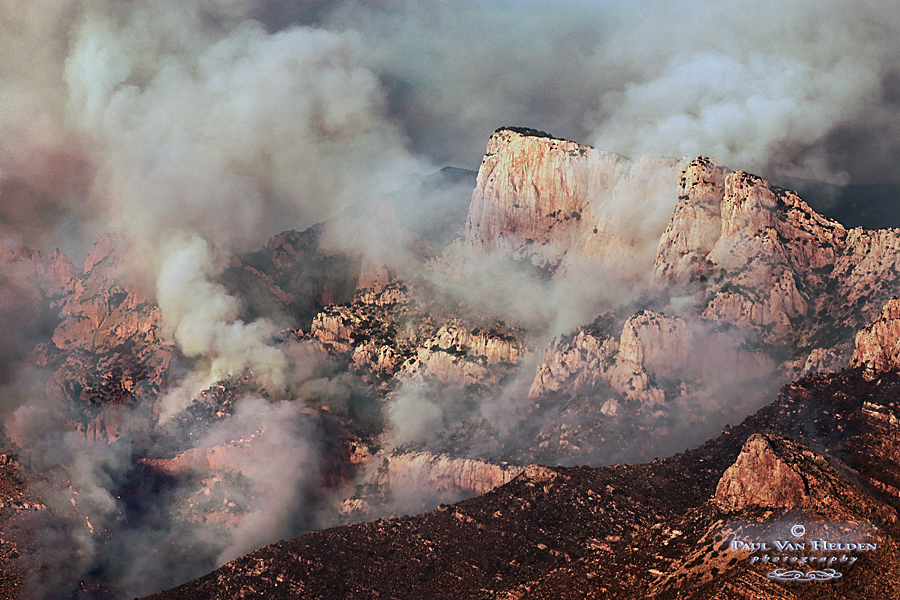
The weeks in June, just before the monsoon season usually gets underway, are the hottest, driest and most dangerous in southern Arizona. Reprieve, in the form of rain, usually doesn’t come until early July on average. So you can imagine my excitement when I awoke to a few claps of thunder Friday night, June 5, a month earlier than average. I quickly got out of bed to look out my bathroom window to see if it was raining, but it was just a few tattered clouds between rays of moonlight. Just dry lighting, I thought. Disappointed, I just went back to bed.
Late the next morning, I learned one of the strikes ignited a fire in the Pusch Ridge area of the Santa Catalina Mountains, a portion of the mountain range that is very visible from my community. You could see the smoke rising. Later that day, just before sunset, I situated myself on a hill in Oro Valley and took these photos.
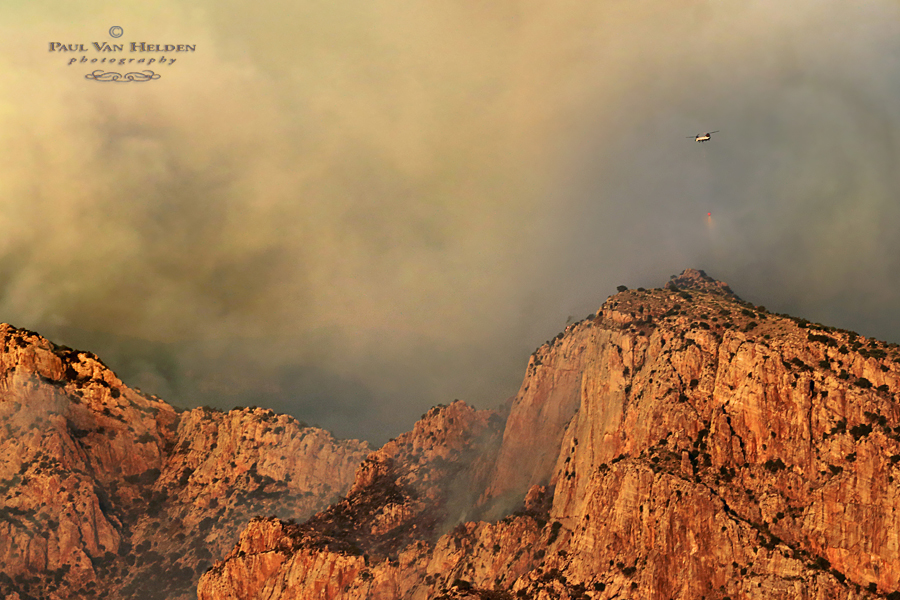
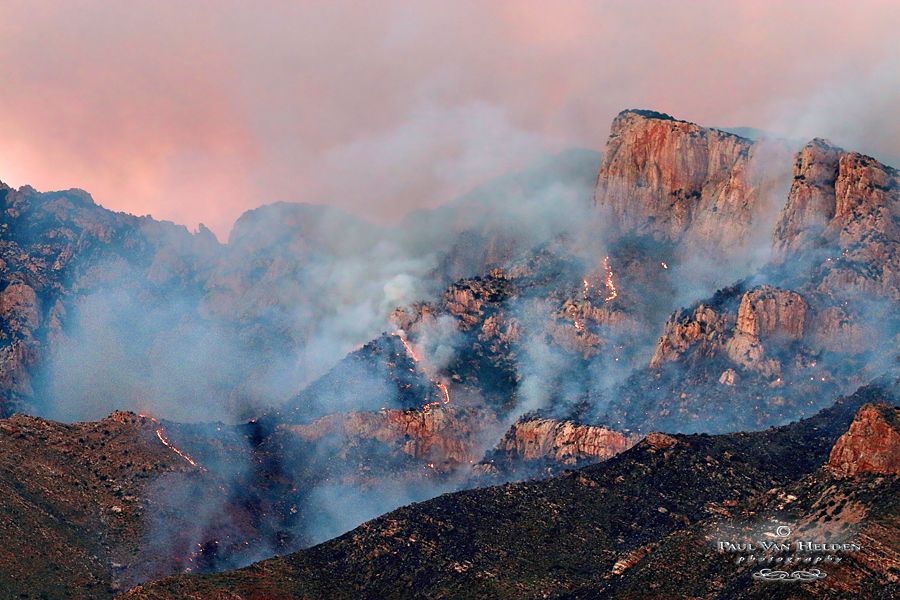
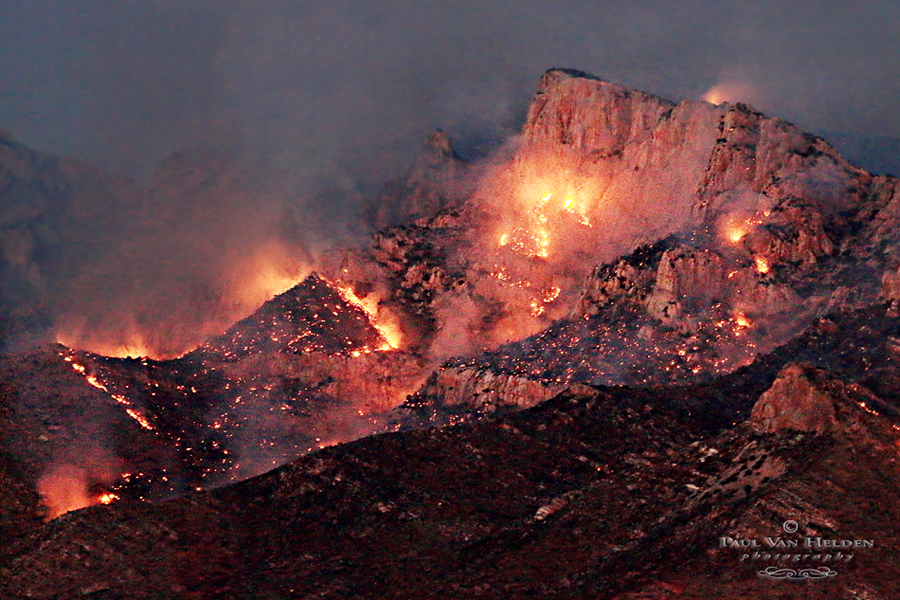
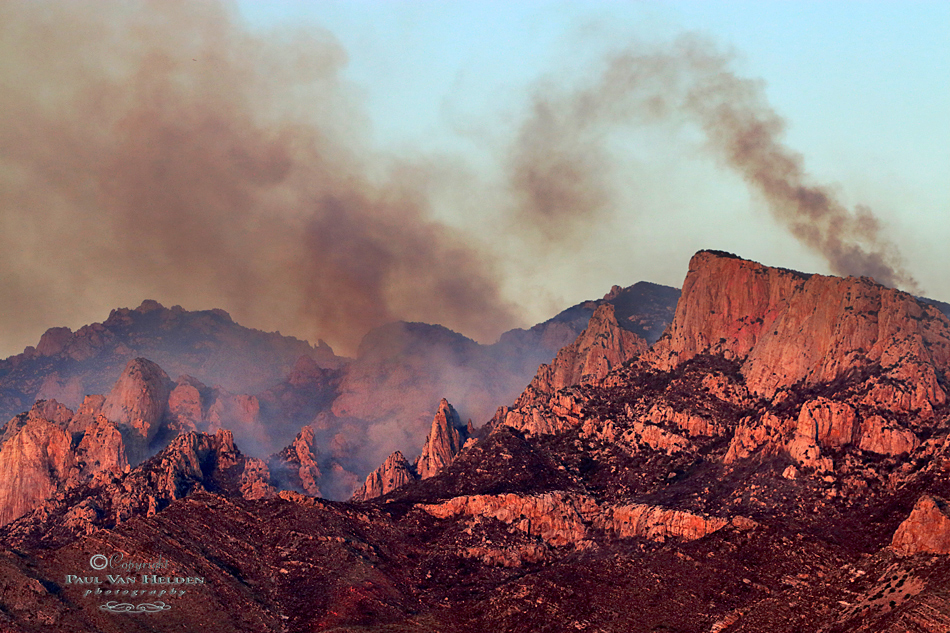
It is frustrating to hear that heavy winds and illegal drone activity have hampered efforts by firefighters to get a handle on the Bighorn Fire. There’s nothing that can be done about the wind, but the drone activity is very selfish and irresponsible. Because of the threat drones present to their safety, planes and helicopters had to be grounded during the critical early hours of the fire.
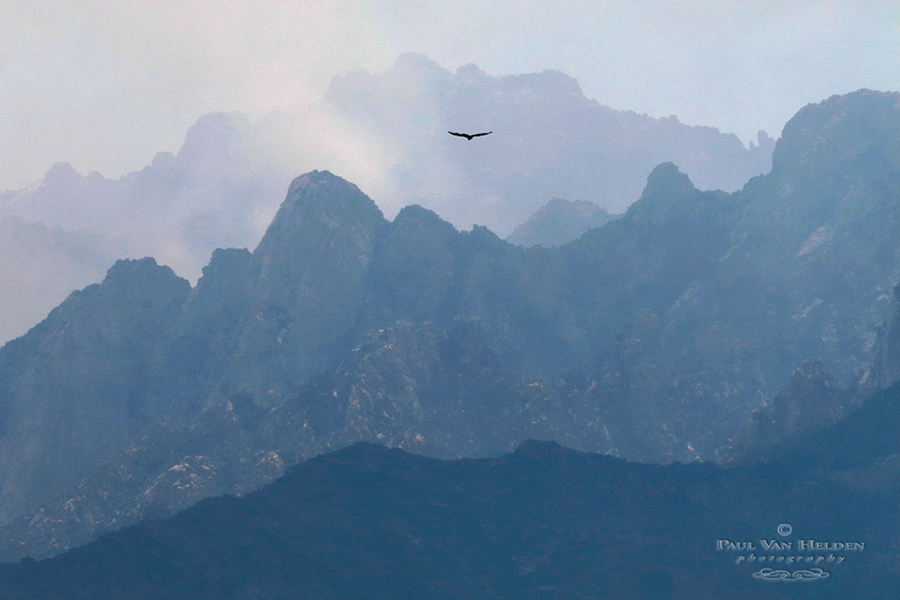
The Bighorn Fire is still on going and, at this point, still remains only ten percent contained. Hundreds of residents living in the Foothills, north of Ina Road were asked to evacuate their homes for safety. The next day they were given the green to return, only to have residents north of Catalina State Park asked to vacate their homes, last night.
I have mixed feelings about taking more pictures of this event. While it presents a rare opportunity for photographers to capture spectacular photos, it is also very saddening. For one, a blackened forest is never as therapeutic and pretty to look at as a green mountainside. Forest fires are expected part of life, especially here in the southwest. Though devastating, they are said to provide ecological benefits, but I question if that still the case, as this pattern of larger and more frequent fires continues. You only need to look at the devastation that has occurred in our neighboring state of California over the last few years. More and larger fires lead to more forestation. Does that equate to an ever increasingly warmer planet too? I’m not a scientist, but that sure would make sense to me.
Update, on July 23, 2020, forty-eight days after it started, the Bighorn Fire was finally deemed one-hundred percent contained. It burned a vast 119,978 acres of some of the prettiest areas in the Santa Catalina Mountain Range.

